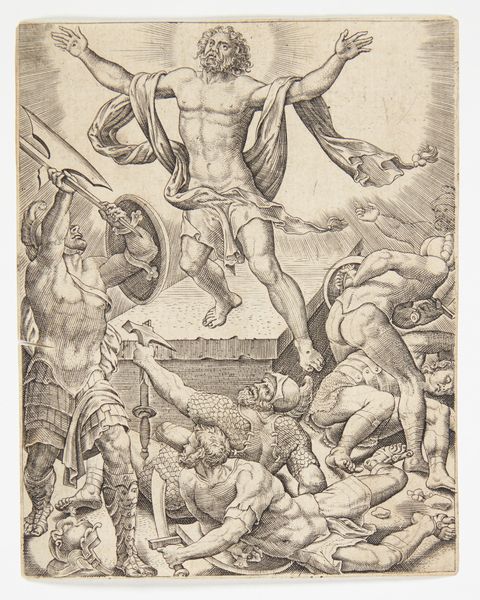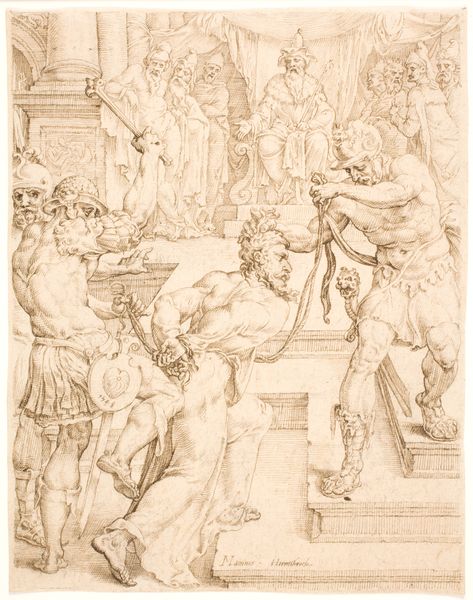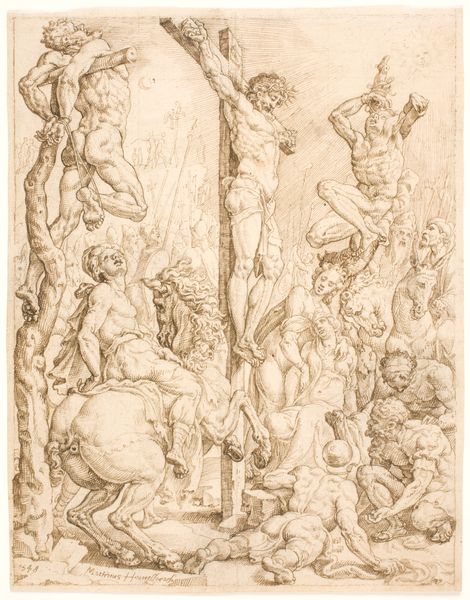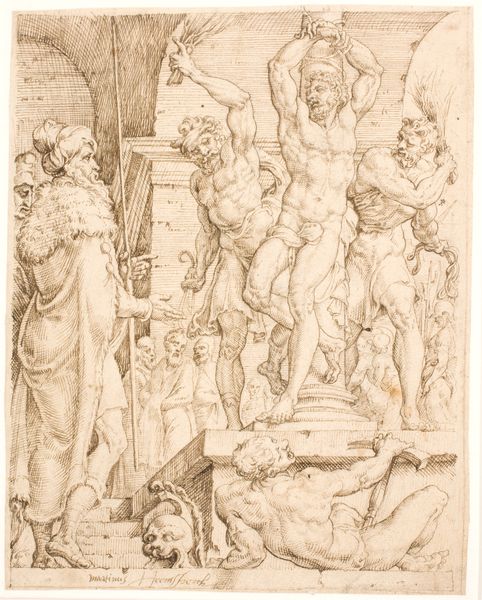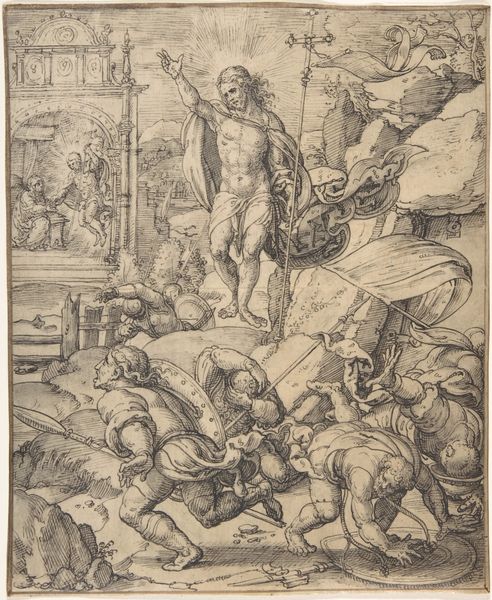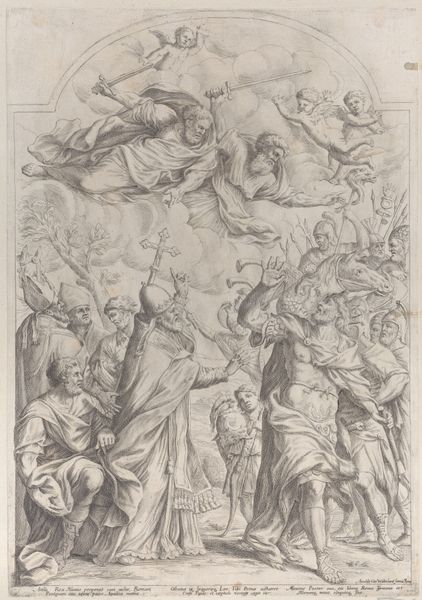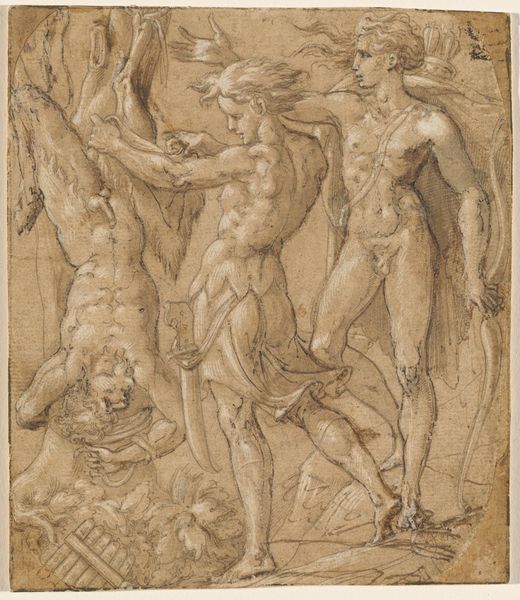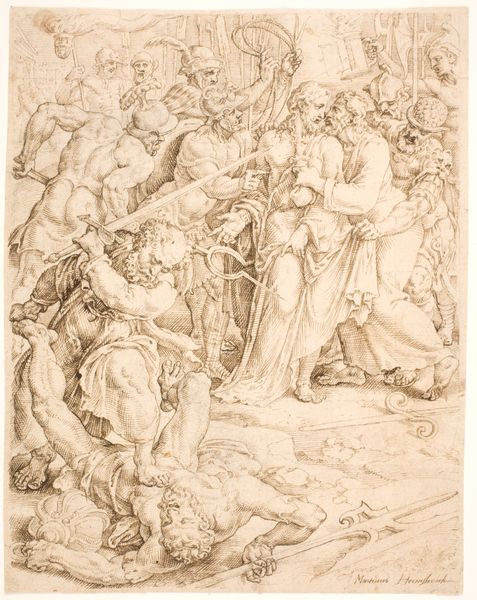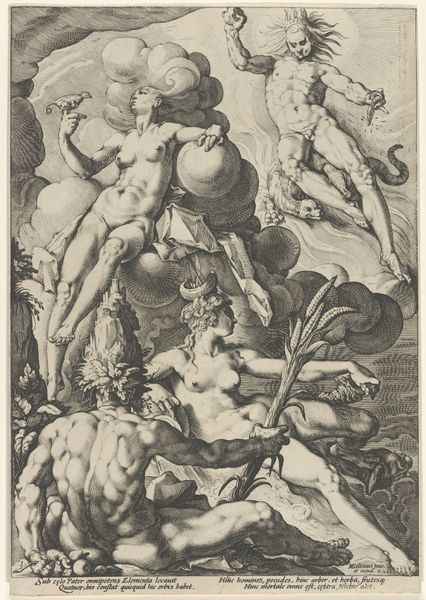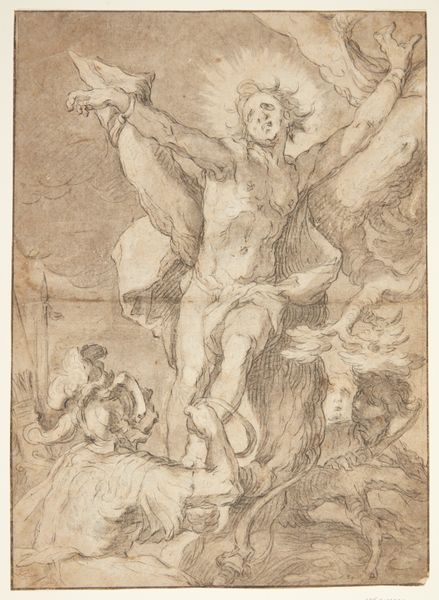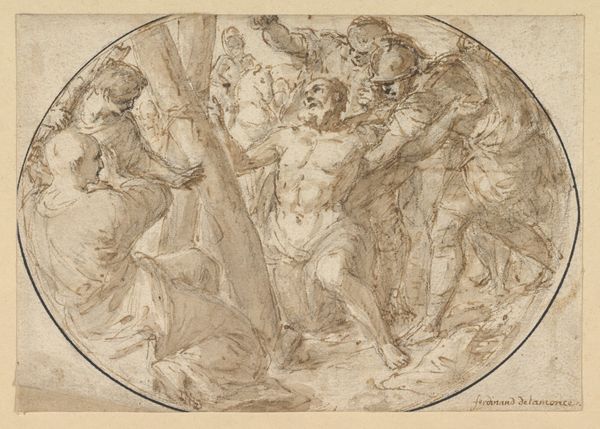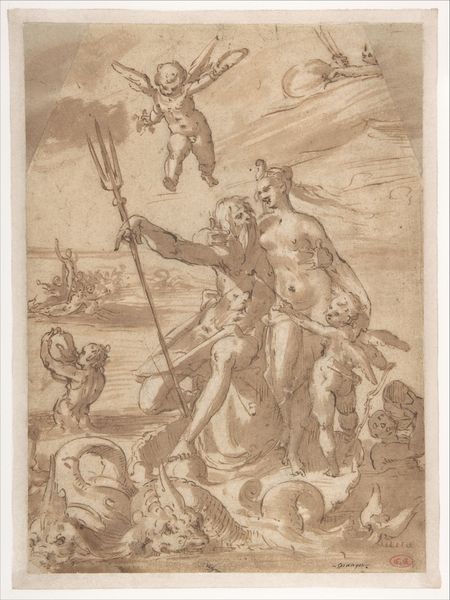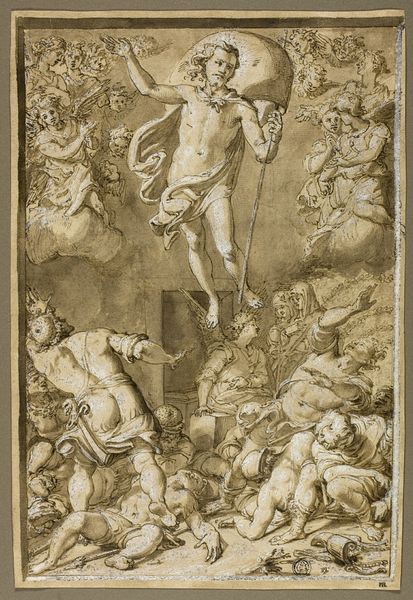
drawing, ink
#
drawing
#
narrative-art
#
ink painting
#
figuration
#
ink
#
history-painting
#
northern-renaissance
#
academic-art
#
watercolor
Dimensions: 255 mm (height) x 198 mm (width) (bladmaal)
Curator: Here we have Maarten van Heemskerck's "The Resurrection," created around 1548. Editor: The overwhelming dynamism here strikes me first. You've got figures strewn every which way, almost a sense of chaotic energy bursting forth from the very center of the scene. The ink drawing provides stark details and the human body becomes sculptural. Curator: Precisely. Heemskerck, steeped in the Northern Renaissance tradition, presents the event as both divine and emphatically physical. The figures and the dense composition speak to the turbulent religious and political climate of the time, as the Reformation gained momentum. Note how Christ isn’t gently ascending; he's erupting! Editor: And those figures below, the soldiers seemingly tossed aside, speak volumes. Look at the detailed rendering of their armor, the tools of war rendered useless by this…event. How meticulous the rendering is, the sheer labor put in creating these varied textures with simple ink strokes. Curator: Consider, too, that prints and drawings like this had a critical role in disseminating religious imagery during this era. Heemskerck and his contemporaries tapped into an emergent print market to connect with a wider audience and promote a specific worldview. This work can be read in contrast to the idealized images of Italian renaissance. Editor: It makes you think about access, too, doesn't it? Ink and paper – relatively accessible materials. Was this piece commissioned, or did Heemskerck create it with the hope of wider distribution? The act of production itself must have shaped its accessibility. Curator: A great question. His work definitely responded to popular piety as shaped by Reformation debates, as we find its echoes in broader societal shifts towards new forms of individual devotion. Its appeal and implications rippled far beyond any single patron or institution. Editor: It's powerful to consider how the labor invested in creating this object impacted its reception. It reminds us that "art" isn't born in a vacuum, but rooted in real material conditions. Curator: Yes, considering those conditions reveals so much about the art’s role, reach, and resonance within its own historical moment and beyond. Editor: Absolutely, that tangible connection to creation offers a way to connect the divine, in a very hands-on and thought-provoking way.
Comments
No comments
Be the first to comment and join the conversation on the ultimate creative platform.
